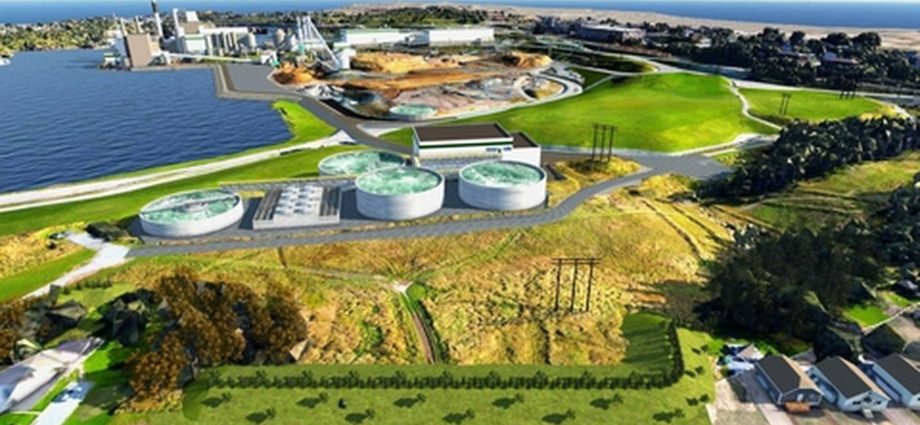
By Marlo Glass, Local Journalism Initiative Reporter, Telegraph-Journal
March 23, 2022
SAINT JOHN • A multimillion-dollar water treatment facility is expected to come to the west side pulp and paper mill five years after its owner Irving Pulp & Paper, Limited was fined for environmental violations.
More than $150 million worth of environmental upgrades were announced by Irving Pulp & Paper, Limited this week. The proposed upgrades include a new environmental treatment facility, as well as a cooling water heat exchanger and pumphouse closer to the mill.
The new treatment facility project is expected to “substantially” improve water quality and also reduce water consumption from Spruce Lake by up to 50 per cent, according to Mark Mosher, vice-president of Irving Pulp & Paper, Limited, in a press release.
A public open house for the project is scheduled for Wednesday at St. Mark’s United Church. The company has filed an environmental impact assessment for the project with the province as part of the approval process.
The proposed new upgrades are expected to help Irving Pulp & Paper comply with a “new enforcement to federal regulations,” according to the release.
In 2018, Irving Pulp & Paper, Limited was sentenced for three Fisheries Act convictions and issued a total of $2.34 million in fines for 10 instances of toxic effluent from the mill leaking into the St. John River between 2014 and 2016. The company also agreed to pay $1.16 million to a research institute, making the $3.5 million in penalties one of the country’s largest environmental court rulings.
At the time, Robert Robichaud, regional director for Environment and Climate Change Canada’s enforcement division, said there were “reasonable grounds to believe that further violations will occur” unless a new approach was taken to operation.
Former J.D. Irving, Limited spokesperson Mary Keith told the Telegraph-Journal at that time the construction of a treatment lagoon would be the “only option to sustain the continued operation of the mill,” and that plans were in the works.
In a statement Monday, J.D. Irving, Limited spokesperson Anne McInerney said the new treatment facility project will go “beyond that commitment.”
“We’re opting to invest in world-class technology in order to meet or exceed our environmental targets and allow us to construct the facility on a relatively small footprint on the existing mill site,” she said in an emailed statement.
Irving Pulp & Paper, Limited has been dealing with how to manage effluent since the early 1990s, when environmental regulations changed. At that time, the area now known as the Irving Nature Park was once the proposed location for a 26-hectare water treatment lagoon.
The proposed site was at Sheldon Point, now part of a popular walking trail, but in 1994, the company abandoned those plans, instead opting to revolutionize the mill. That took the form of a four-year project that cost $25 million and set up a system that reused effluent internally to weaken it before releasing it into the St. John River.
The new $150-million project, McInerney said, will the company “comply with environmental regulations should they, or the enforcement approach, change in the future.”
The Telegraph-Journal requested comment from Environment and Climate Change Canada, but was directed to the province’s environment department. The newspaper requested comment from the department, but did not hear back as of press time.
Residents must pre-register in order to attend Wednesday’s open house. A website, IPPmodernization.com, has been set up to provide information to the public.
Sign Up for Our Newsletter.
“Saint John’s mill is at the centre of our forest products value chain and building this facility is the right thing to do to ensure our long-term environmental performance and stay competitive,” McInerney said.
– With files from Mike Landry


